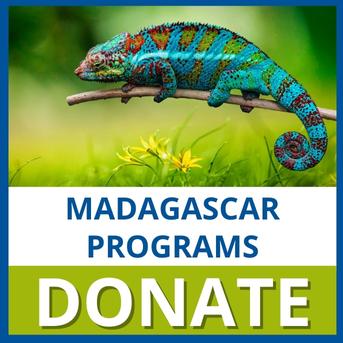Conservation of Madagascar’s unique natural resources requires a long-term strategy that empowers communities to be stewards of their environment. Fostering a generation of environmental stewards begins with reconnecting people with nature. This takes many forms, from incorporating environmental lesson plans into daily classroom instruction, to experiential learning in natural spaces. These initiatives can lead to a generation of Malagasy people interested in and equipped to protect their natural heritage.
From the Classroom to the Forest
Our education specialists have visited more than 50 schools throughout the SAVA region to deliver a value-added educational plan that not only teaches about lemurs and the environment, but encourages the schools to develop their own green initiatives. We’ve followed up with these schools to conduct program evaluations, and we’ve observed with our own eyes how these communities have changed. Many have made school gardens, tended by the students and teachers, while others have planted fruit trees all around the school yard. We helped one school create their own fish pond, from which they can sustainably harvest fish for food and sale.
We also support guided forest visits for youth groups at national parks and private reserves so that young people have opportunities to learn first-hand about the environment, with a World Heritage site, Marojejy National Park, as their classroom. In one collaboration, we partner with the New Generation School Garden (NGSG), a nature interpretive center outside the main city of Sambava. DLC-SAVA Environmental Education Specialist Evrard Benasoavina founded the NGSG to share his love of the environment and create a truly unique nature experience. With partnerships from the Duke Lemur Center, GEO, and many others, he restored almost 10 hectares of deforested land to a thriving food forest. He also created classrooms, a library, a picnic area, bungalows, and more. Thus far, the DLC has supported the School Garden’s efforts to get children out of the classroom and into nature. Over 1,600 school children had three-part lessons and camp-outs with our educators. Six schools had week-long summer camp experiences and went home to tell their parents and communities all about what they learned.
“The children are always surprised by how many species we have in our region,” says Evrard. “It gives a sense of pride about the valuable biodiversity found only here.”
More Information
More information and photos of DLC-SAVA activities can be found in our newsletter archive and on our video page.
Support Our Work
Please make a contribution today to support SAVA Conservation. 100% of funds for the DLC’s Madagascar Conservation Programs come from donors and grants. Thank you!






